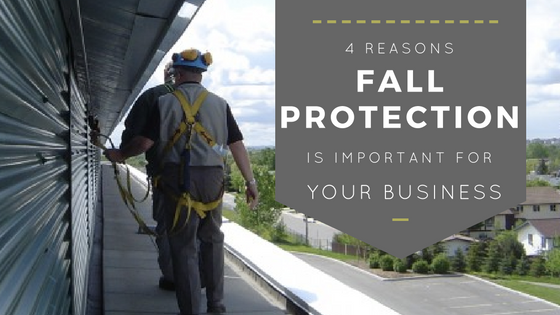
Why Fall Protection Is Critical for Safety & Success
1. Legal Reasons
Occupational Safety and Health Administration (OSHA) has established six general safety standards for employers to meet. Additional standards become very detailed with regard to different industries and applications, various workplace environments, and individual job functions. OSHA requires employers to take job safety seriously:
- All employers must have workplaces which are safe for workers.
- They must have systems in place which prevent employees from falling off elevated locations or into dangerous equipment and machinery, whether that work surface is elevated or not.
- If someone does fall, then the fall protection equipment must perform in such ways that it minimizes injury.
- Employers must provide appropriate personal protective equipment for their employees and at no cost to the employee.
- Employers must train their employees about possible workplace and activity hazards in ways they can understand. The training must relate to selecting, using and maintaining appropriate equipment and systems.
- Employers may not retaliate against anyone who exercises their right to a safe work environment. That right includes an employee raising a safety concern or reporting an accident.
2. Personal Safety
Possibly the most obvious reason for installing and using the correct safety system. Employees who feel safe as they go about their work will be more productive. Employees who know they work for an employer who keeps their safety in mind will be more motivated to perform efficiently and effectively. Accidents cause injury, pain and in some cases death, so making personal safety a clear priority has a positive impact on individuals and their families’ wellbeing.
3. Business Success
High-quality job performance reduces costs and increases profitability. Lower insurance premiums and an absence of aggressive litigation also keep costs down. A company with a reputation for meeting or exceeding OSHA, and CSA, safety standards is likely to win more contracts more easily. Stated A company with a reputation for finishing projects on time, to budget, and without stoppages for accidents sees success.
4. Litigation and Insurance Reasons
OSHA cites fall protection as being the most common workplace safety violation. In a 2015 edition of Claims Journal, Liberty Mutual stated that workplace falls, slips and trips cost $12.59 billion in workers’ compensation costs. Liberty Mutual is the USA’s leading provider of workers’ comp insurance. Past insurance claims have a direct impact on future insurance premiums.
OSHA has established detailed regulations for every working environment and job activity. Some apply in one situation but not in another. Some regulations have exceptions for given circumstances, and there are also some gray areas. An employee, or a family member, may choose to seek legal advice after a fall. An experienced job safety attorney will probably require documented proof that everything to do with fall protection is up to OSHA standards. They will study the overall system design and installation, the particular piece of equipment worn or used by the employee, the employee’s training and supervision, and how the equipment was maintained. Attorneys build cases based on facts. It is good to have the facts pointing to a no-fault situation.
We Can Help You Succeed
We want to work with you to design, engineer, install and maintain the right system for your needs. Contact Tritech Fall Protection Systems and let’s get to work – safely!

Leave a Reply